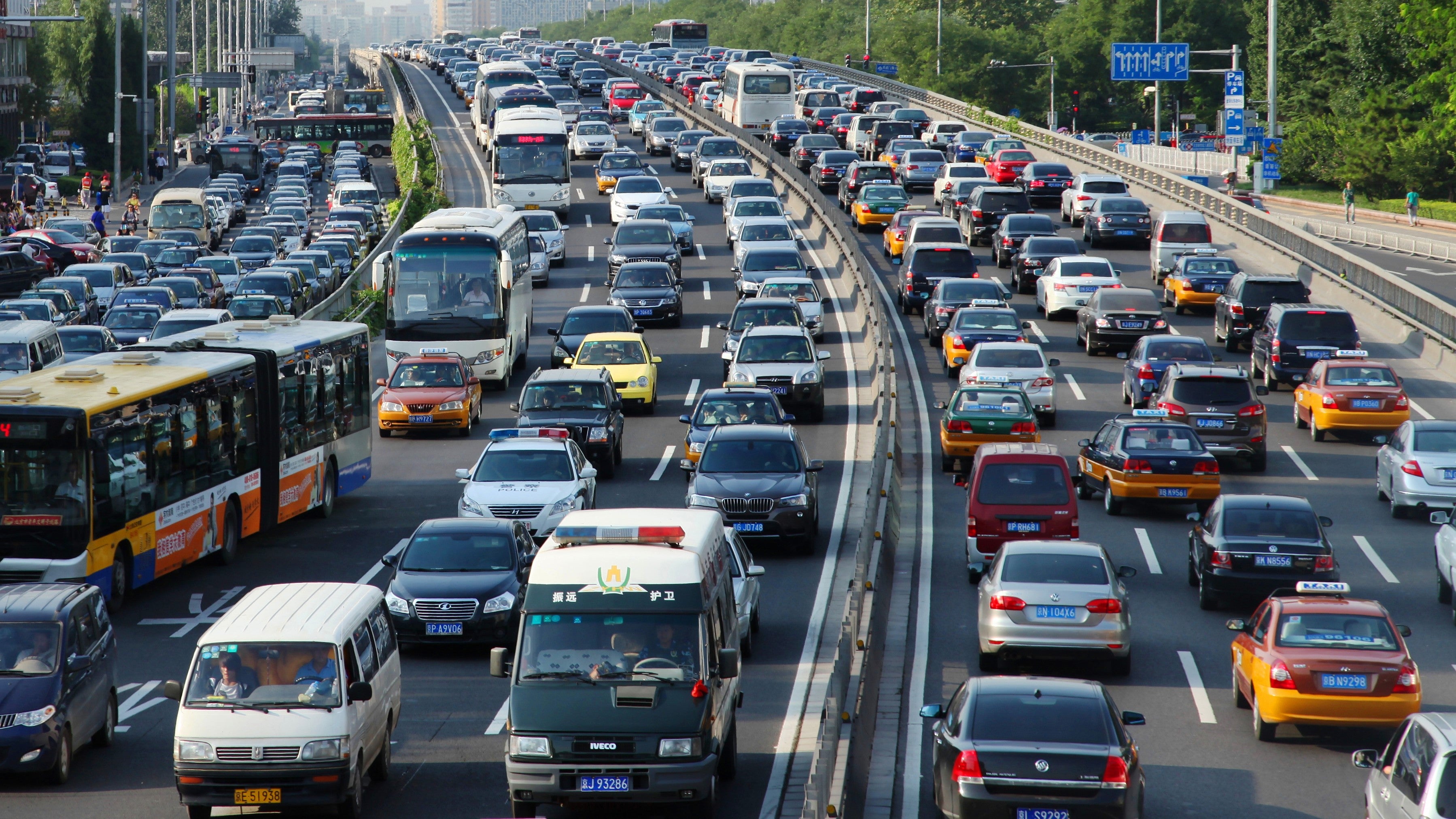 Heavy traffic in Beijing, China. Photo credit is Li Lou / World Bank
Heavy traffic in Beijing, China. Photo credit is Li Lou / World Bank
This blog is part of a special series on cities and climate change. The views and opinions expressed are those of the authors and do not necessarily reflect the policies or position of the World Bank Group.
Less asphalt, more silicon: this is the motto we should adopt as we approach the future of urban mobility. To tackle the pollution caused by traffic jams and other forms of urban congestion, cities can avoid building new physical infrastructure by using digital tools to do more with existing resources. In emerging countries, this strategy stands at the intersection between sustainability and growth. Across the planet, it will be essential for climate action and our future.
To understand how we can change everyday urban life, consider the strategies used to combat the coronavirus pandemic. In early 2020, the term "flattening the curve" exploded across newspapers and websites across the globe. It rested on the idea that social distancing and face masks do not eliminate COVID-19, but can slow it down to prevent ventilators, ICU beds, and healthcare professionals from being overwhelmed.
Now that we have learned how to flatten the curve of the infection, could we apply the same principle to our everyday lives? Beyond healthcare, we know that all infrastructure—from highways to power grids—becomes congested and fails when demand exceeds peak capacity. Would curve-flattening work there, too?
Let’s focus on the way we get around. Uncontrolled spikes of daily demand—manifesting as rush hours—are the biggest nemesis to our mobility infrastructure. Because they share the same schedules, commuters overwhelm our highways and suffer from painful standstills.
The consequences are known the world over, from a daily honking symphony in Los Angeles, California, to drivers getting out of cars for random conversations and improvised jam sessions that marked the hours-long traffic jams in Lagos, Nigeria. However, the inconvenience of stop-and-go traffic is trivial compared to its environmental impact. Acceleration and deceleration cycles are terrible for gas mileage, releasing up to 29 times more pollutants than driving freely across the same distance.
What should we do to reverse course? The obvious solution of widening the roads is dubious in effectiveness, very expensive, and leaves even more land idle for most of the day. Instead of increasing supply, climate-savvy urbanization should work towards decreasing peak demand. Since the first outbreak of COVID-19, the radical rescheduling of our professional lives could allow us to do just this.
Today, many workers are using staggered shifts, visiting the office at different times to avoid overcrowding. Beyond reducing the risk of the COVID-19 contagion, this also decongests our roads. After the pandemic, remote working can allow us to remain light on our feet. Imagine some of us attending a morning meeting via Zoom and arriving at the office at noon, while others leave early and conclude the workday from home. Rush hour would be twice as long, but only half as crowded. The cars running uninterrupted would also yield lower exhaust gas emission and an improvement in climate conditions.
Flexibility does not translate into “flattening the curve” automatically; governments must nudge in this direction. With digital platforms, they can offer dynamic incentives. In Singapore, the Electronic Road Pricing (ERP) system charges congestion tolls based on the current volume of traffic. As the Internet of Things matures, we can improve our efforts with digital sensing and individualized incentives, perhaps traded via blockchain.
In emerging countries, big cities could leapfrog conventional stages of development and advance directly to cutting-edge mobility technologies. This was the path followed by telecommunications: a report from the GSM Association predicts that Uzbekistan’s level of smartphone adoption will rise from 45% in 2018 to 74% in 2025. The same trend is expected in other nations in Latin America and Africa. The rising popularity of phones lends itself toward Big Data analysis. The Digital Matatus project, co-founded by MIT professor Sarah Williams, aims to restructure the informal public transit of Nairobi, Kenya, by studying cell phone location data.
Some infrastructural redundancy is still essential to account for unexpected situations. Swift, exogenous events like natural disasters force simultaneous infrastructure use, and some moments—consider the World Cup—are meant to be experienced together.
However, daily traffic jams are a relic of 20th century planning mistakes that we have the power to discard. Rapid societal change in the face of COVID-19 reminds us of our capacity for change. Today, flattening the curve has been a necessary response to a crisis. Tomorrow, it can be a tool that we wield to attain the cities we want: seamless, climate-positive, and truly worth living in.
Carlo Ratti teaches at the MIT Department of Urban Studies and Planning and is a founding partner at the design office CRA-Carlo Ratti Association.
Related links:
- Subscribe to our Sustainable Cities newsletter
- Follow @WBG_Cities on Twitter




Join the Conversation